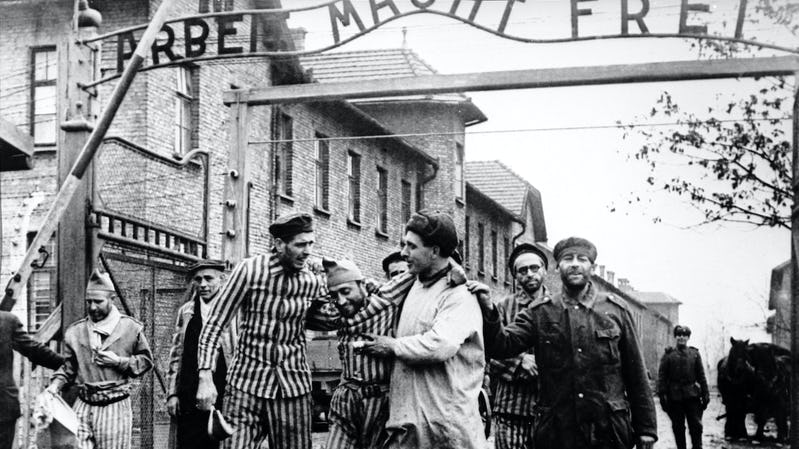The Holocaust, Part Two: The "Final Solution"

(NEWSELA)

(NEWSELA)
The second in a two-part series
Throughout the spring and summer of 1940, the German army expanded Adolf Hitler’s empire in Europe. Nazi soldiers conquered Denmark, Norway, the Netherlands, Belgium, Luxembourg and France. Beginning in 1941, Jews from all over the continent were transported to Poland. They were placed in confined city sections called ghettos. In June 1941, the German raid on the Soviet Union marked a new level of brutality in warfare. Mobile killing units would murder more than 500,000 Soviet Jews and others over the course of the German occupation.
On July 31, 1941, one of Hitler's top commanders wrote about the need for a "final solution" to "the Jewish question." Beginning in September 1941, every person designated as a Jew in German-held territory was marked with a yellow star. This made all of them open targets. Tens of thousands of Jews were soon being deported to the Polish ghettos.
Since June 1941, experiments with mass killing methods had been ongoing at the concentration camp of Auschwitz. That August, officials used a pesticide called Zyklon-B to gas 500 Soviet prisoners of war to death. Nazi leaders soon placed a huge order for the gas, a disturbing sign of the coming Holocaust.
Beginning in late 1941, the Germans began transporting huge numbers of people from the ghettos in Poland to the concentration camps. They started with those people viewed as the least useful: the sick, the old, the weak and the very young. The first mass gassings began at the camp of Belzec on March 17, 1942.
Five more mass killing centers were built at camps in occupied Poland. These camps included Chelmno, Sobibor, Treblinka, Majdanek and Auschwitz. From 1942 to 1945, Jews were deported to the camps from all over Europe. The heaviest deportations took place during the summer and fall of 1942, when more than 300,000 people were deported from the Warsaw Ghetto alone.
The Nazis tried to keep the operation of the camps a secret, but the scale of the killing made this impossible. Eyewitnesses brought reports of Nazi atrocities to the Allied governments, who were fighting against Germany in the war. The Allied powers included Britain, France, the United States and many other countries. Their governments were harshly criticized after the war for their failure to respond to news of the Holocaust.
This lack of action was most likely due to the Allied focus on winning the war at hand. But it was also a result of the governments' refusal to believe that such atrocities could be occurring on such an enormous scale. At Auschwitz alone, more than 2 million people were murdered. A large population of Jewish and non-Jewish prisoners worked in the labor camp there. Only Jews were gassed to death, but thousands of others died of starvation or disease. During the summer of 1944, even as Germany was beginning to lose the war, a large part of Hungary’s Jewish population was deported to Auschwitz. As many as 12,000 Jews were killed every day.
By the spring of 1945, German leadership was suffering from internal conflict. Several Nazi leaders were trying to distance themselves from Hitler and take power. In his last will, dictated in a German bunker on April 29, Hitler blamed the war on “international Jewry and its helpers.” The following day, he committed suicide. Germany’s formal surrender in World War II came barely a week later, on May 8, 1945.
German forces had begun evacuating many of the death camps in the fall of 1944. They forced prisoners to march away from the advancing enemy's army. These so-called “death marches” resulted in the deaths of some 250,000 to 375,000 people. In his book “Survival in Auschwitz,” the Italian Jewish author Primo Levi described life in the camp the day before Soviet troops arrived in January 1945: “We lay in a world of death and phantoms. The last trace of civilization had vanished around and inside us. The work of bestial degradation, begun by the victorious Germans, had been carried to a conclusion by the Germans in defeat.”
The wounds of the Holocaust were slow to heal. Survivors of the camps found it nearly impossible to return home. In many cases they had lost their families and been denounced by their non-Jewish neighbors. As a result, the late 1940s saw a great number of refugees and other displaced populations moving across Europe.
In 1945, the Allies began the Nuremberg Trials, an effort to punish the villains of the Holocaust. The trials brought Nazi atrocities to horrifying light. Increasingly, there was pressure on the Allied powers to create a homeland for Jewish survivors of the Holocaust. This eventually led to the establishment of the state of Israel in 1948.
Over the years that
followed, ordinary Germans struggled with the Holocaust's bitter
legacy. Meanwhile, survivors and the families of victims sought
repayment for the wealth and property stolen from them during the
Nazi years. In 1953, the German government began to make payments
to individual Jews and to the Jewish people. This was a way of
acknowledging responsibility for the crimes committed in their
name.